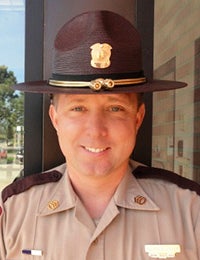Ask a Trooper: Icy bridges are often hard for drivers to see
Published 8:45 pm Tuesday, February 8, 2022
|
Getting your Trinity Audio player ready...
|
Question: I heard you talk about bridge decks freezing up on the radio, can you please write about it?
Answer: An icy bridge’s most dangerous threat is their element of surprise — they catch drivers off guard. Even though the main roadway may appear relatively safe, bridges, overpasses and exit and entrance ramps can be icy. Drivers traveling on a clear, dry day may not realize that wind under bridges can quickly turn a thin layer of water or snow to ice. That’s because a bridge is exposed to air on all of its surfaces — on top, underneath and on its sides. This causes it to lose heat more quickly than a normal road surface that only has a top surface exposed to air.
Approach bridges, overpasses and ramps with caution.
• Take your foot off the accelerator to gradually slow down. Never slam on your brakes.
• Keep a safe distance from the car in front of you.
• Keep both hands on the steering wheel, eyes on the road, stay alert — and remember that your seat belt is your best defense in case of a crash.
You can avoid a ticket — and a crash — if you simply buckle up, drive at safe speeds, pay attention and always drive sober. Help us drive Minnesota toward zero deaths.
If you have any questions concerning traffic-related laws or issues in Minnesota, send your questions to Sgt. Troy Christianson, Minnesota State Patrol, at 2900 48th St. NW, Rochester, MN 55901-5848; or reach him at Troy.Christianson@state.mn.us.
Troy Christianson is a sergeant with the Minnesota State Patrol.


